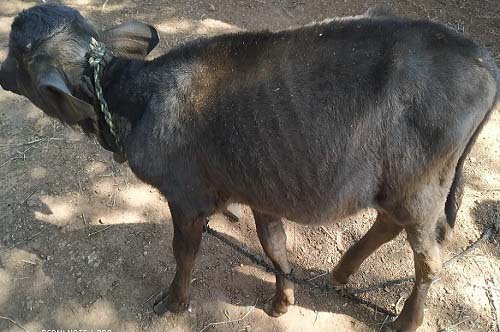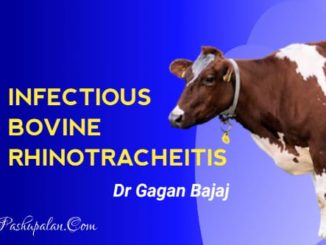Winter is the deadly season of many stray animals as well as farm animals. Some of reports in Delhi said winter causes death of stray dogs. Management of winter stress to the animals is very much necessary for many small scale farmers. Many disease outbreak which is contagious, vector borne disease, some of the zoonotic disease outbreak occur during winter season. Goats are more affected than sheep. Cattle were affected than buffalo due to the wool and thick skin coat of the animals. In India, major steps of some of the animal welfare organization helps by giving clean food and water, shelters to the stray dogs. Stray animals die due to starvation and cold climate. Not only stray or fake animals, wild animals also affected by cold climatic conditions. Example of incredible India, we worship the animals as God and some of them are involved in protecting the animals especially in wild animals also during winter. Ex: Kartik Satyanarayana founder of elephant conservation and care centre in Mathura, kind hearted made a warm cloth for the elephants to fight against the winter climate.
Many disease out break occur during the cold climate. Reason for outbreak are as following:
- Unhygienic condition in and around the shed which is prone for the growing of the ecto parasites such as mosquitoes, musca, tabanus, and so many acts as intermidiate host for many diseases and also helps for annoying during feeding of animals.
- Endo ecto parasitic infestation
- Poor ventilation and small shed closed windows also causes disease to the animals.
- Cold weather, cold wind also causes mortality to new born animals.
- Pneumonia or respiratory diseases high during this season.
- No shelter during night or high cold weather days of cattle, buffalo, sheep and goat, stray animals which were affected by cold climate.
- No proper care and management of ectoparasitic endoparasitic diseases.
- Low immunity animals were affect early such as new born of animals, calf of buffalo mainly affected by hypo thermia.
- Many gastrointestinal disease such as calf diphtheria, coccidiosis occur high during this season.
Diseases out break during winter season:
Many disease out break observed during winter season.
Viral disease:
| Disease name | Causative agent |
| Foot and mouth disease | Foot and mouth virus, picorna viridae |
| Infectious bovine rhinotrichitis | Herpes virus type 1 |
| Bovine viral diarrhoea | Pestivirus |
| Peste des petitis ruminant | Morbilivirus |
| Lumpy skin disease | Lumpy skin disease virus |
Bacterial disease
| Disease name | Causative agent |
| Botulism | Clostridium botulinum |
| Black leg | Clostridium chovei |
| Tetanus | Clostridium tetani |
| Malignant edema | Clostridium septicum |
| Black disease | Clostridium noyvi |
| Bacillary haemoglobinuria | Clostridium haemolyticum |
| Enterotoxemia | Clostridium perforinges |
Parasitic disease: The animals with rough hair coat, diarrhoea, pica, itching annoying Anemia potted belly symptoms observed.

Endoparasitic infestation: Common endoparasite found during winter such as stomach worm, hook worm, toxocara, lung worm, liver fluke and haemonchus.
Ectoparasitic infestation: Lice, ticks flies and mosquitoes are normally reproduction is high in winter and causes many harm protozoal diseases such as babesiosis, theleriasis, anaplasma etc.
Pneumonia and respiratory diseases: Most of the animals affected with pneumonia due to improper ventilation and organisms present in the animals. Due to stress in the season, the viral bacterial organism take upper hand and produces the disease and causes the outbreak of the animals. Respiratory disorder such as rales, thick mucous from the nares cough sneezing high temperature symptoms observed in the animals.
Hypothermia: the immune depressed animals, diseases animals, claves and old animal most affected by the in winter season. Stray animal also affected. Shivering, Subnormal temperature, and fallen down with pale mucous membrane and the peripheral could circulation of the blood is not proper. Digits cold and no sensation. Shrunken eyeball. Respiratory and pulse rate decreased.


Treatment: Proper rubbing and the animal should be warmed by giving energy by external as well as internal. Warm the animals with hot water fomentation and massage the animals. Give the shock therapy such as warm fluids, calcium related fluid, liver tonic as supportive therapy for 3-5 days. For pneumonia broad spectrum antibiotics should be given with supportive therapy some times nebulization also done.
Winter management to the livestock:
- Provide proper shelter to the animals with proper ventilation facilities.
- Proper clean water provide to the animals, avoid chilled, freeze water it will decrease the metabolism of the body and affect the production of the animals.
- Cleaning of shed and surrounding area and if possible morning and evening provision of mosquitoes repellent coils, electric current in shed, if small scale farmers them Neem leave burn in around the shed. It will help to animals for avoiding the diseases.
- Ventilation should be proper no ammonia or nitrogen gases in the shed it causes pneumonia or other disease.
- Food provision: In winter season animal required high amount of food as temperature drops. Roughage should be given high amount to maintain the milk production. The grains such as maize, oats, wheat available in the market and usage such as concentrate feeding as oil cakes at the rate of of 3kg to the large animals such as cattle and buffalo feeding helps in maintaining the body heat of the animal. Calves also feed with high quality and quantity of milk to maintain the body temperature in harsh cold climatic conditions.
- The shades near by farm should be cut so that infiltration of sunlight directly occur in the shed.
- To young calves and young animals should be warm by covering with sand bags, gunny bags and blankets.
- Floor should be clean, dry and bedding with straws which acts as insulation and prevention of heat loss.
- In India some where lit cool fire also used during winter days. Electrical bulb and heater, insulation should be there for heat the room weather.
- Deworming should be regularly done with all animals.
- In sheep and goats, non slippery beds and 4 hour sunlight should be given to animals.
- Do not shear the wool or cut of the hairs of the sheep in winter season.
- Trim the animal hooves every 3 months to avoid the foot rot and foot condition in sheep and goats.
- Isolation and hay stake beds should be prepared for the pregnant and before pasturated animals. To avoid overcrowding and specific space to the animals for parturition.
Reference
- Management of all livestock species in winter season- vetextension.com
- Wikipedia






Very nice
Nice article